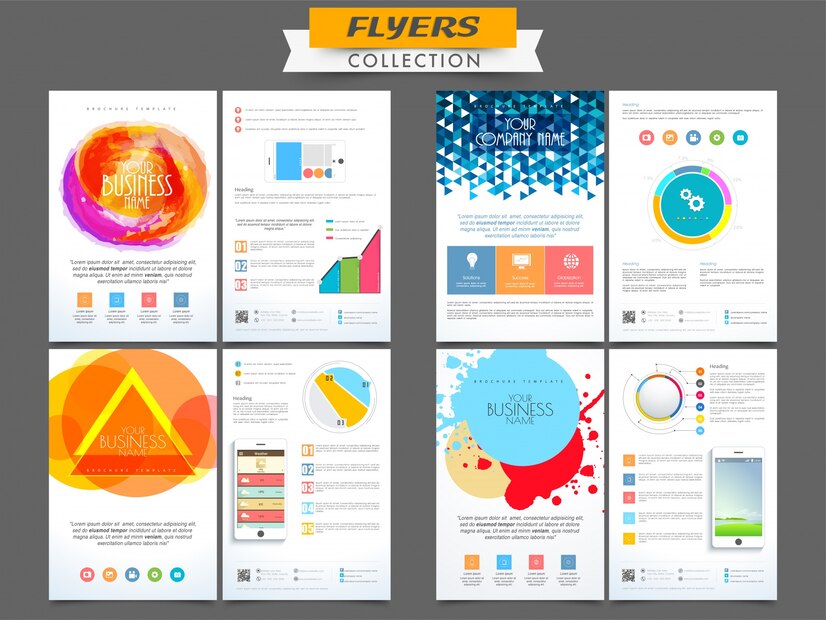Digital Marketing Report Template

In the fast-paced world of digital marketing, the ability to track and analyze the impact of your strategies is a game-changer. A well-crafted digital marketing report can transform various data points into actionable insights. Marketing professionals often find themselves in a data maze, attempting to decipher which metrics matter and how to present them. Having the right report
template can be invaluable for every marketer’s toolkit.
Understanding your return on investment (ROI), customer acquisition cost (CAC), click-through rates (CTR), and other key performance indicators (KPIs) isn’t just important – it’s essential. These compasses guide future marketing strategies, helping you maintain course or change direction as needed.
Read More: Digital Marketing Salary Texas
Why Standardizing Your Reporting Process is Vital
First, why should you standardize your reports? The most compelling reason is scalability. When your reporting is consistent, it’s easier to identify growth patterns, successes, and failures across various marketing channels. As your operation expands, a standardized report ensures every team member can interpret and act on the numbers without a learning curve with every new campaign or strategy change.
Another reason is clarity. A standardized report layout, with familiar sections for strategically chosen metrics, reduces cognitive load for you, your team, and your stakeholders. Clarity and a common understanding of the report’s content allow for more meaningful discussions and decisions.
Crafting a Digital Marketing Report: The Basics
The objective is clear – you need to create a report that communicates the performance of your digital marketing efforts. This task involves more than just compiling numbers; it requires storytelling. The best reports weave data into narratives explaining what happened, why it happened, and what to do next.
Your report should, therefore, include the following elements:
Executive Summary: An overview of the most critical findings. A standalone section should offer a snapshot of your marketing performance to those needing a bird’s eye view.
Objective and Methodology: Before you launch into statistics, remind your audience what the report is for and how you collected the data. Methodology transparency is especially important when dealing with sensitive information like user data.
Key Findings: This section distils the most important results into digestible insights. It should highlight both successes and areas that need improvement.
Data Analysis: Present the data you collected and share detailed insights drawn from the analysis.
Recommendations: Based on the analysis, offer actionable recommendations for future campaigns.
Appendices: This is where you’ll put all the detailed data tables and supplementary charts for your report. They can be referred to throughout the report but are optional reading.
Constructing the Right KPIs for Your Digital Marketing Report
While every marketing funnel is different, there are standard KPIs that provide a starting point for any report. These might include:
Conversion Rates: For both your website and specific landing pages. This number can tell you how well a page is performing and the state of your overall funnel.
ROI and ROAS: The return on investment is a keystone marketing metric that shows your campaign’s profitability. Return on ad spend (ROAS) is specific to your advertising efforts and is a subgroup of ROI.
Customer Acquisition Costs (CAC): This metric will inform whether your customer acquisition strategies are cost-effective.
Click-Through Rates (CTR): For emails, social media ads, and pay-per-click (PPC) campaigns. How are your calls-to-action (CTA) performing?
Bounce Rates: For your website, specific landing pages, and email campaigns. A high bounce rate might indicate a need for better targeting or more compelling content.
Organic Traffic: Measuring the success of your search engine optimization (SEO) strategies.
Engagement Metrics: Depending on your marketing channels, these include the average time on site, social media shares, video views, and comments.
Each of these KPIs will help you paint a picture of the effectiveness of your various marketing strategies within the larger digital landscape.
Section by Section: Defining Your Report Structure
Section 1: Executive Summary
You’ll need to provide a snapshot of your performance in this section. Speak to the high-level KPIs, note any significant milestones (positive or negative) and outline the potential impact on your business. Remember that this summary is often all a busy executive will read, so make it powerful and clear.
Section 2: Objective and Methodology
This is where you outline what this report is designed to show. Say so if it’s an overview of your marketing strategy’s performance over the last quarter. Methodology comes next, and it’s especially important if external stakeholders will review your report. It should be concise yet comprehensive.
Section 3: Key Findings
Here’s where you’ll present the key takeaways. Were there any surprises in the data? Did you significantly outperform KPIs? Did any campaigns underperform? This section is about telling the story the data is showing and preparing the reader for the analysis to come.
Section 4: Data Analysis
Depending on the complexity of your report, this section can range from a few pages to a dozen or more. Organize your analysis by theme – campaign, channel, content type, etc. Provide context for the raw numbers and discuss the significance of trends and anomalies.
Section 5: Recommendations
Your data analysis paves the way for actionable recommendations. Tie these back to your objectives and KPIs from the beginning of the report. Each recommendation should address an issue or allow you to capitalize on a success.
Section 6: Appendices
This is where your charts, tables, and supplementary data reside. They should be referred to in the body of the report as evidence and explanation, but the appendices are meant to be read in partial.
Delivering Your Digital Marketing Report
Presenting your report can be just as important as what it contains. Consider the following tips:
Keep it Visual: Infographics, charts, and tables help to communicate complex data. They often make it easier for people to grasp key points quickly.
Be Consistent: Use the same visual elements for the data types whenever possible. This helps with clarity and establishing a ‘look’ for your brand’s reporting.
Use a Data-Driven Narrative: Start with the most compelling data points and construct a story around them. Why are these numbers important? What do they tell us about the market, the consumer, and our brand?
Tailor Your Reporting: The reports you provide to the C-suite, shareholders, and marketing team will likely differ in detail and tone. Ensure you’re crafting your message so the audience will receive your report.
Set the Context: Ensure the reader understands the circumstances around the data. Was there a major holiday that impacted sales? Were there any significant market changes? Make sure your reader knows.
Read More: How To Ice Skate Near Me
Crafting a digital marketing report that visually and conceptually resonates is a skill that evolves with practice and feedback. By standardizing your reporting process and using a template as a foundation, you can enhance the consistency and utility of your reports. Remember to refine your template as you gather experience continuously and the digital landscape shifts.
Leveraging Technology for Enhanced Reporting
With the vast array of marketing tools available, gathering and analyzing data has become more efficient. Platforms like Google Analytics, HubSpot, and many others now offer integrations and reporting features that can streamline your data compilation and enhance the visual representation of your reports.

Make sure you’re taking full advantage of these tools. Automation can also handle the generation and distribution of reports. This not only saves time but also ensures up-to-date analysis for your team.
Conclusion Digital Marketing Report Template
Digital marketing is as much about understanding your audience as creative execution and technical prowess. Your reports are an extension of that understanding, offering a communications channel through which the data-driven marketer speaks. With a thoughtful and detailed template, you can achieve a consistent and high-quality standard in your reporting that will support and enhance your digital marketing efforts. Remember, the data doesn’t lie – and the best stories are drawn from the truth it reveals.